Before I go into Step 4 – here is a quick recap on previous steps 1 – 3, the links to which are available at the end of this blog:
- Step 1 – Develop the sustainability baseline and accurate picture of ‘Now’. We are talking materiality, risk analysis business case for sustainability, direct and in-direct impacts.
- Step 2 – Policy and strategy building. What are you committed to achieving? By when? How are you going to do it?
- Step 3 – Management systems and reporting frameworks. The topic of my last blog, which looked at ways to measure and monitor progress effectively.
So now onto internal/employee engagement. A massively important area. Arguably the most important area for organisations looking to truly embrace sustainability.
It’s also an area that can be forgotten or not given appropriate attention and focus. This scenario generally occurs when organisations are focused on appeasing shareholder demands or other external audience pressures. The strategy and comms then get geared towards those audiences. This is a missed opportunity in so many ways.
In this blog I’ll focus on 3 principles we use to help organisations approach sustainability engagement effectively.
Theme 1 - Sphere of influence
Training and engagement represents one of the best opportunities to change behaviours, drive efficiency savings and sustainability.
In order to devise and roll-out a successful programme, we need to understand and identify the key groups we wish to influence and educate. The diagram below provides an example view of the way we segment an audience, with our sphere of influence growing in terms of audience scale.
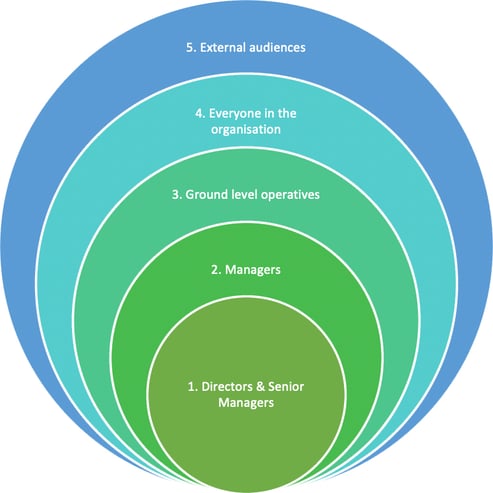
We must recognise the different roles and contributions each audience can make towards sustainability, drawing out the key messages we wish to convey for maximum impact.
There will be certain parts of the organisation that require more detailed sustainability training, whether that is linked to carbon, energy management, waste compliance or ESG responsibilities for example.
Initial focus should always be on the internal audience i.e. our employees, but there will be the opportunity to influence external audiences with our engagement materials i.e. investors, supply chain and our customers by leveraging our content and materials in a slightly different way.
Theme 2 – The Training Cycle
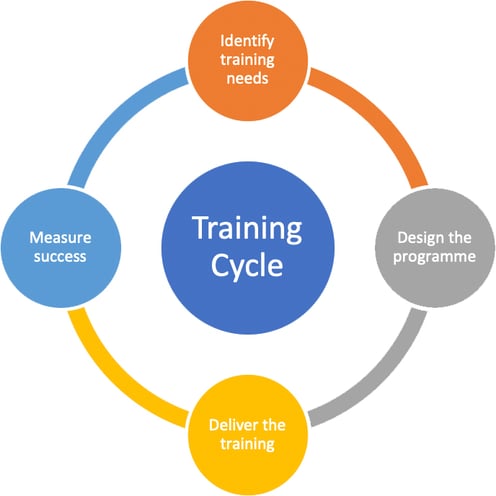
The Training Cycle is a systematic approach to the development, delivery, and continuous improvement of a training program. It consists of an orderly series of stages to help ensure that the training designed and developed, achieves what is desired and intended.
The old fashioned ways are still prevalent. ‘Lets build a quick and dirty powerpoint with some photos of bins and a bit about carbon footprint that we give to people on induction’. No wonder the audience isn’t engaged on sustainability.
This is a serious process, looking at behaviours in layers and dimensions; how do we mix up the learning styles? How can we use a multi-media approach to this programme.
For more information on behaviour and behaviour change, check out our white paper.
Theme 3 – Quantify the impact
This is all linked to the above – essentially the ‘measuring success’ part. There are a few dimensions to this:
- How does the learning programme impact the individual and their skill level and understanding in a professional context? This can be expressed as a formal qualifications CPD, or professional qualifications for example. Self-assessment, reaction level assessment, quizzes and tests are staple components to ensure the message is getting through. Clearly if done correctly the new skills massively benefit the individual and the organization as long as those skills can be transferred.
- How does the learning programme benefit a specific initiative? We could for example look to implement an energy efficiency training programme but the only way to see its effectiveness is to measure and monitor energy consumption. Its therefore essential that we align the training with our data capture initiatives to show impact.
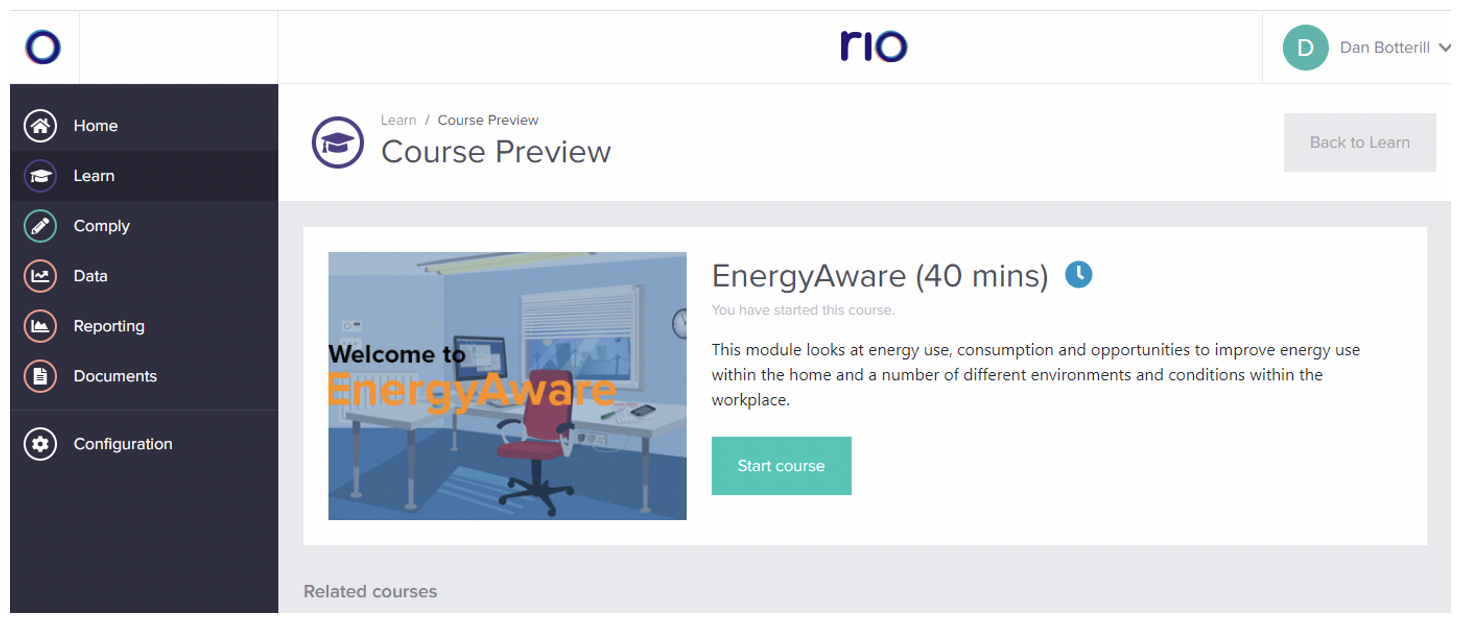 Module launch screen within Rio Engage.
Module launch screen within Rio Engage.
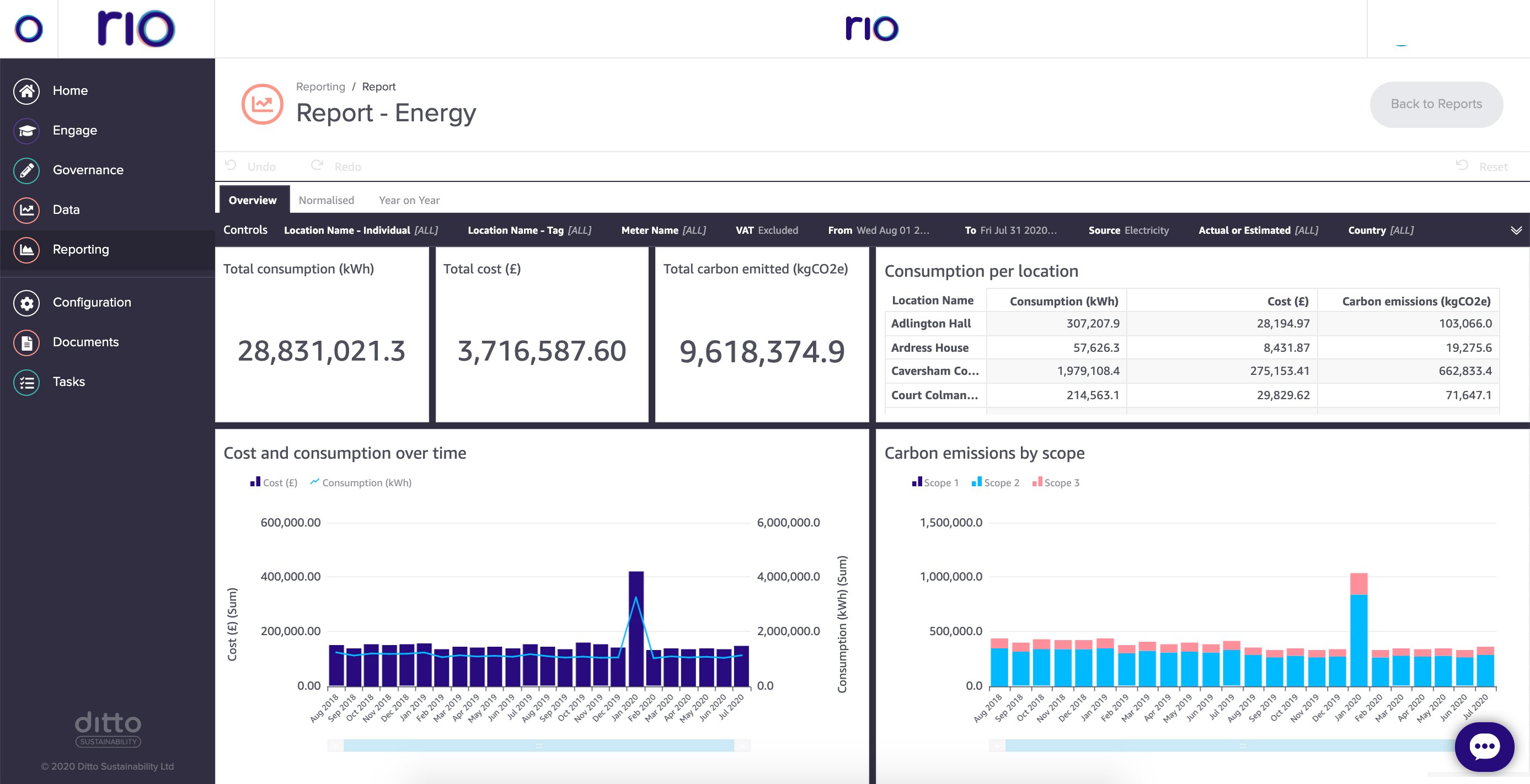
Energy use dashboard on Rio.
- Can the employee take these skills for wider societal benefit? As the lines blur between working from home and working at the office; how can what we learn about sustainability at work, benefit us at home? This is a key and evolving level of responsibility organisations must understand, embrace and encourage.
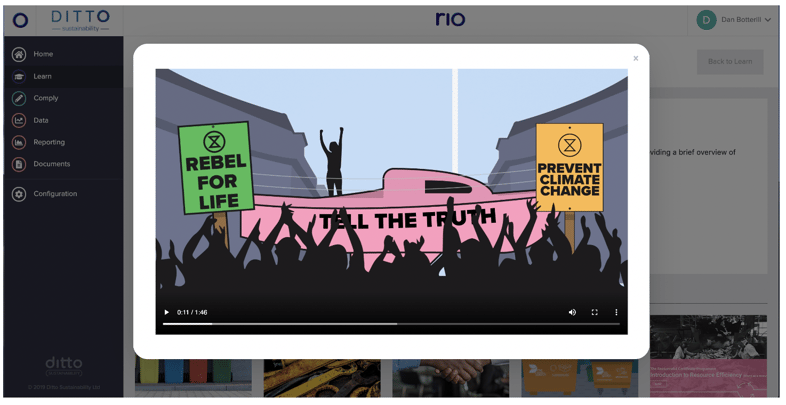
I’ll be back for Step 5 in the not too distant future – looking at supply chain and extended stakeholder engagement.
To catch up on the previous three steps, click onto these three links: Step 1, Step 2, Step 3.


